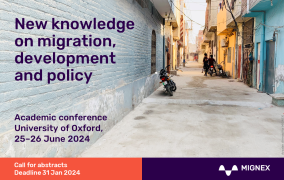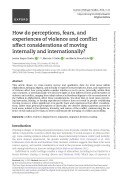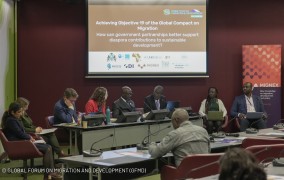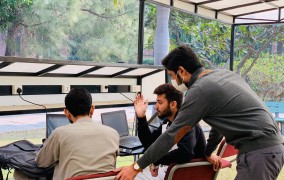MIGNEX Insight
Learning from transformative or progressive development approaches to displacement
A truly transformational development agenda requires a rethink of the humanitarian-development nexus, with many interventions currently failing to balance immediate humanitarian need with longer-term development aims writes Nassim Majidi and Karen Jacobsen.
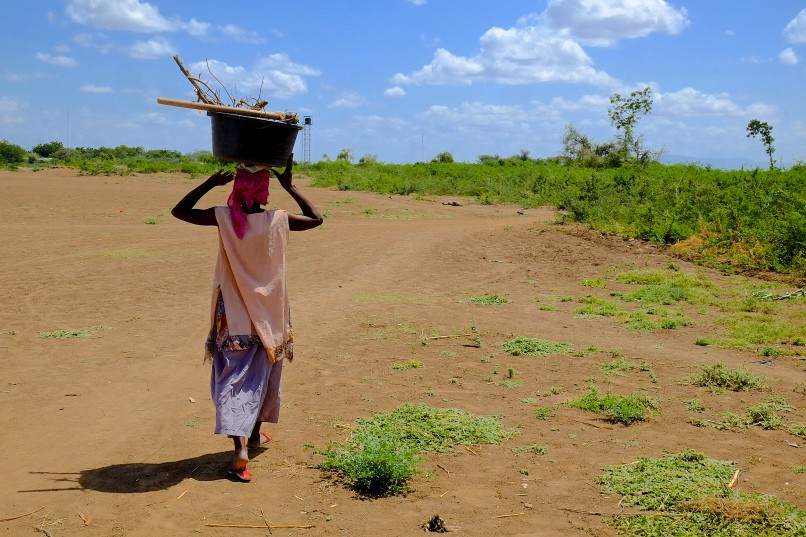
In the last few years, donor funding has increasingly supported ‘new ways of working’ from the Middle East to East Africa, signalling a nexus between humanitarian and development work, notably in the area of refugee response. The Global Compact on Refugees acknowledged the limits of the current system and the ‘burden’ that fell disproportionately on countries proximate to conflicts and disasters, and on humanitarian systems of care and maintenance. With a call to support refugee-hosting areas as part of this reform, the lives of refugees in Jordan, Kenya, Uganda and Ethiopia have finally begun to receive more attention globally.
We can be cautiously optimistic. New policies can engender new ways of thinking, both conceptually and in practice. They can give birth to new ideas and initiatives. Yet while new policies often highlight problems they do not always point to appropriate solutions. More time needs to be spent discussing what those ‘solutions’ are, rather than pushing forward unilateral solutions that may fail.
What assumptions need to be tested and challenged?
The assumption that humanitarian action can easily cross over into the development phase needs to be tested. Often the slow pace of development work has meant that humanitarians have taken on new responsibilities that go well beyond – and may compromise – their core mandate of protection. For example, humanitarian agencies’ efforts to put in place sustainable livelihoods programs for refugees are sometimes implemented without taking into account the wider market context.
The Kalobeyei Integrated Socio-Economic Development Plan (KISEDP), a project to improve development prospects for refugees and hosts in the Turkana region of northwestern Kenya, offers an example of the challenges in the humanitarian-development nexus. KISEDP is a precursor to the global Comprehensive Refugee Response Framework (CRRF) and aims at a transformative approach for refugee assistance and hosting, through agriculture-based livelihoods for refugees, host-led market in the refugee settlement, and integrated schools and clinics. But plans for Kalobeyei were drawn up rapidly, under pressure by European donors in the wake of the ‘migration crisis’. Under each of these objectives – food security, market systems, education and health – stark differences remain between the Kalobeyei plan and the realities the ground.
Kalobeyei was supposed to build a self-reliance model for refugees from Kakuma in protracted situations. Yet those in Kalobeyei are recent arrivals, displaced from a range of countries. Another key issue concerns poor design and missed opportunities. Health services are not integrated with water and sanitation. In schools, a mid-term review finds that the average learner to classroom ratio for ECD and primary classes is 166:1, well above national and international standards. KISEDP suffers from the lack of education and health services, and gaps in child protection. Agencies have presented long-term food and nutrition security and economic opportunities as a growing success, but basic humanitarian needs have been left unmet.
KISEDP reveals a key lesson: new interventions aim for development, but when they happen in contexts that still need humanitarian aid, problems persist. Kalobeyei’s humanitarian-development nexus has not materialized, in part because knowledge and awareness of hosts and refugees’ preferences and practices has been lacking.
What could be truly transformational?
Bringing the social back into development policy would be truly transformational and a way to address such shortcomings in the nexus. Amartya Sen’s work has taught us that development and poverty approaches must be multi-dimensional, and must account for individuals’ capability to achieve the kinds of lives they value. This means integrating social, economic and legal interventions, and avoiding silos.
Take the example of Technical and Vocational Educational Training (TVET) activities. TVET’s ultimate goal is to improve access to income and thereby improve people’s self-reliance and access health, education, and other services. But TVET activities need to be part of a holistic approach. In Afghanistan and Somalia, TVET programs are de-linked from other variables that could lead to greater well-being. Finding work depends on skills, on who people know and how they can put their knowledge and skills to use. For those who have been in protracted displacement, this means building their skills in exile and regenerating their social capital upon return. An overview of previous and existing interventions finds that programming focuses neither on the potential of social networks to sustain livelihoods nor on ways to enhance TVET in exile, while the two should be bridged.
We need a transformational development agenda, but current practice cannot yet be called transformational. Critical thinking is required, but this cannot be the responsibility of humanitarian agencies or state-mandated organisations. A truly transformational approach must be based on carefully thought-through plans developed together by development and humanitarian agencies with a healthy dose of critical and historical analysis from researchers and academics. MIGNEX researchers will spend the next year gathering data and analysis on the humanitarian-development nexus from Afghanistan, Ethiopia,Somalia and others, to pave the way for evidence that can better support policy and programmatic efforts to bridge the nexus.
Cite this publication
Majidi, N. and Jacobsen, K. (2019) Learning from transformative or progressive development approaches to displacement. MIGNEX Insights. Oslo: Peace Research Institute Oslo. Available at: https://www.mignex.org/publications/learning-transformative-or-progressive-development-approaches-displacement
